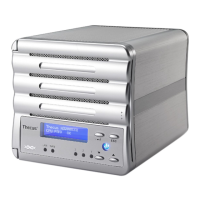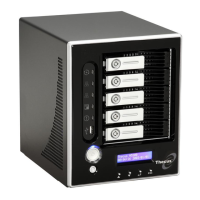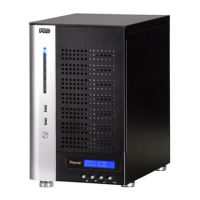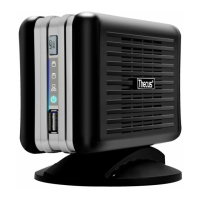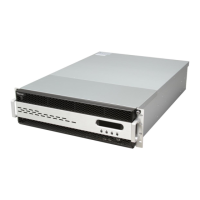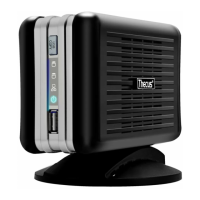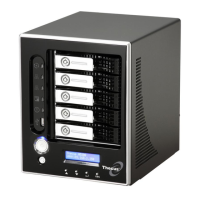Building a RAID volume may be time consuming, depending on the size
of hard drives and RAID mode. In general, if the RAID volume building
process is up to “RAID Building”, then the data volume is accessible.
Creating RAID destroys all data in the current RAID volume. The data will
be unrecoverable.
RAID Level•
You can set the storage volume as JBOD, RAID 0, RAID 1, RAID 5, RAID 6, or RAID 10 (depending on
model).
Level
Model
JBOD RAID 0 RAID 1 RAID 5 RAID 6 RAID 10
N2310
RAID configuration is usually required only when you first set up the device. A brief description of
each RAID setting follows:
RAID Levels
Level Description
JBOD The storage volume is a single HDD with no RAID support. JBOD requires a minimum of 1 disk.
RAID 0 Provides data striping but no redundancy. Improves performance but not data safety. RAID 0 requires a minimum of
2 disks.
RAID 1 Offers disk mirroring. Provides twice the read rate of a single disk, but same write rate. RAID 1 requires a minimum of
2 disks.
RAID 5 Data striping and stripe error correction information provided. RAID 5 requires a minimum of 3 disks. RAID 5 can sus-
tain one failed disk.
RAID 6 Two independent parity computations must be used in order to provide protection against double disk failure. Two
different algorithms are employed to achieve this purpose. RAID 6 requires a minimum of 4 disks. RAID 6 can sustain
two failed disks.
RAID 10 RAID 10 has high reliability and high performance. RAID 10 is implemented as a striped array whose segments are
RAID 1 arrays. It has the fault tolerance of RAID 1 and the performance of RAID 0. RAID 10 requires 4 disks. RAID 10
can sustain two failed disks.
